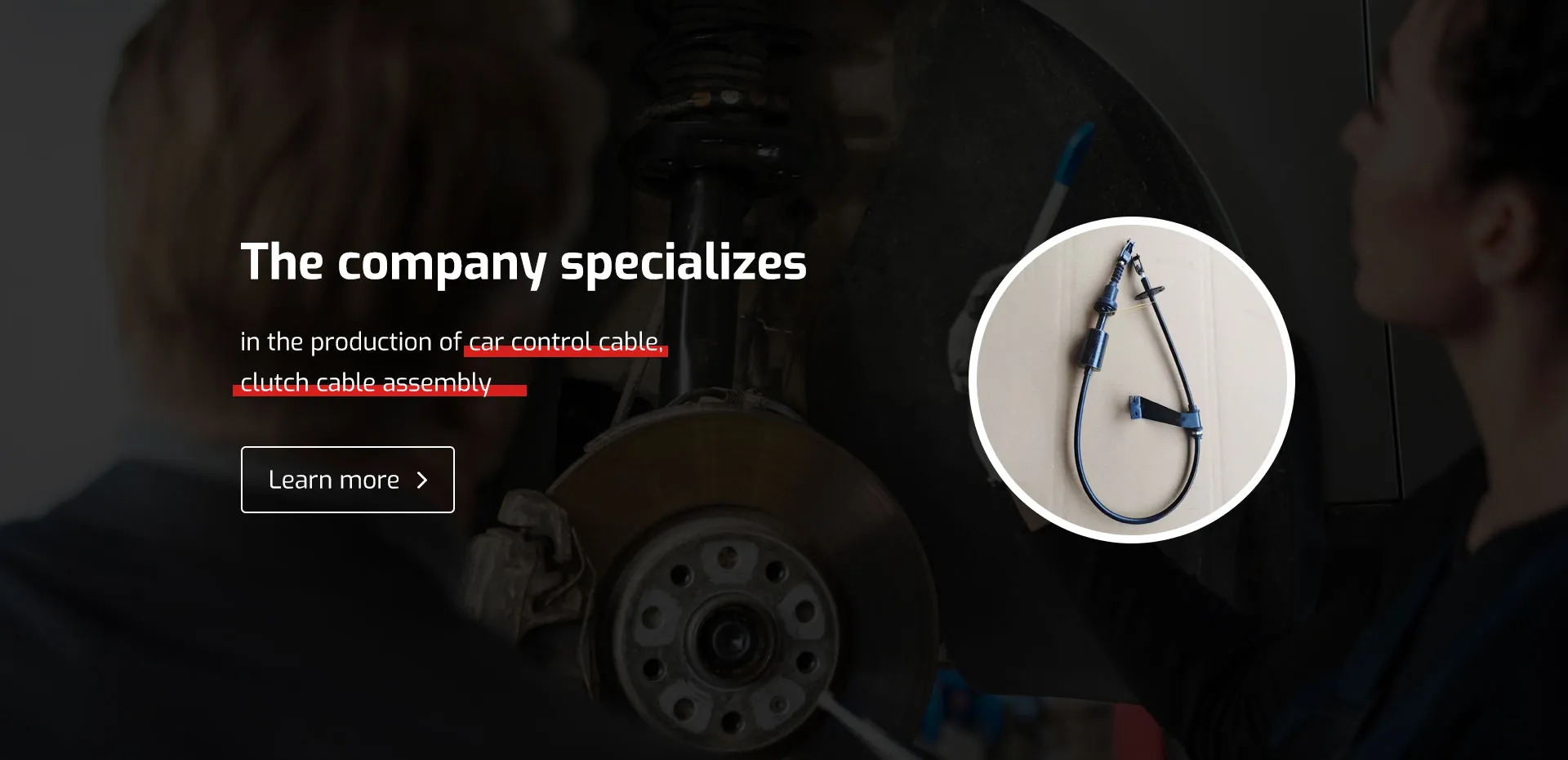gear cable
Understanding Gear Cables A Crucial Component for Efficient Cycling
In the world of cycling, the importance of every component cannot be overstated. Among these components, the gear cable stands out as a key player in ensuring a smooth and efficient ride. Whether you are an avid cyclist or a casual rider, understanding the role of gear cables in the functionality of your bicycle can enhance your riding experience and help you maintain your bike more effectively.
What is a Gear Cable?
A gear cable is essentially a thin wire that connects the gear shifters located on the handlebars of a bicycle to the derailleur, which moves the chain between gears. This interaction allows cyclists to change gears seamlessly, adjusting to varying terrains and ensuring optimal performance. The gear cable is part of the larger gear system, which includes the shifters, the derailleur, and the chainrings or cogs.
The Function of Gear Cables
The primary function of gear cables is to transmit the force exerted by the cyclist through the shifters to the derailleur. When a rider wants to shift gears, they pull or release the gear lever, which in turn either tightens or loosens the cable. This action causes the derailleur to move, shifting the chain onto a different cog or chainring. Essentially, the gear cable acts as a mediator, translating the rider's input into mechanical movement that alters the bike’s gearing.
Types of Gear Cables
There are typically two types of gear cables inner cables and outer cables
. The inner cable is the actual wire that runs through the outer casing and is responsible for the tension needed to shift gears. The outer casing protects the inner cable from dirt, debris, and wear, while also providing a smooth pathway for the inner cable to move through.Cyclists can choose from a variety of materials for their gear cables, including stainless steel, which resists corrosion, and coated cables that reduce friction for smoother shifting. Each type comes with its own pros and cons, depending on the environment and the cyclist's preferences.
Maintenance of Gear Cables
gear cable

Proper maintenance of gear cables is essential for optimal performance. Over time, cables can stretch, fray, or become corroded, resulting in poor shifting or even complete failure. Regularly inspecting your gear cables can help identify any issues early on. A simple visual check can reveal fraying at the ends or corrosion, which may necessitate replacement.
Lubrication is also important; keeping the inner cable well-lubed allows for smooth movement and prevents rust. Additionally, cleaning the outer casing can keep dirt and grime from building up, which can inhibit the cable's movement.
Signs of Worn Gear Cables
Cyclists should be attentive to the performance of their gear cables. Key indicators that your gear cables may need attention include
- Sluggish Shifting If changing gears becomes an effort, it may indicate that the cables are stretched or not moving freely within the casing. - Ghost Shifting This occurs when the bike shifts gears unexpectedly or without input. It can be a sign of damaged cables or a malfunctioning derailleur. - Visible Damage Any kinks, rust, or fraying of the cable itself should prompt immediate replacement to prevent more severe issues.
Upgrading Your Gear Cables
For those looking to enhance their cycling experience, upgrading to high-performance gear cables is an option worth considering. Many brands offer lightweight and durable cables designed for competitive cycling, which can improve shifting efficiency and overall bike performance. Additionally, investing in quality cables from reputable manufacturers can lead to a better long-term experience, reducing the frequency of replacements and maintenance.
Conclusion
In summary, gear cables may seem like a small component in the grand scheme of bicycle mechanics, but their importance cannot be underestimated. Understanding their function, maintenance, and signs of wear and tear can significantly enhance a cyclist’s performance and experience. Whether you're navigating city streets or tackling mountain trails, ensuring your gear cables are in top condition will allow you to embrace the ride with confidence, knowing that you can shift gears smoothly and efficiently when it matters most.
-
Workings of Clutch Pipe and Hose SystemsNewsJun.04,2025
-
The Inner Workings of Hand Brake Cable SystemsNewsJun.04,2025
-
The Secrets of Throttle and Accelerator CablesNewsJun.04,2025
-
The Hidden Lifeline of Your Transmission Gear Shift CablesNewsJun.04,2025
-
Demystifying Gear Cables and Shift LinkagesNewsJun.04,2025
-
Decoding Clutch Line Systems A Comprehensive GuideNewsJun.04,2025
